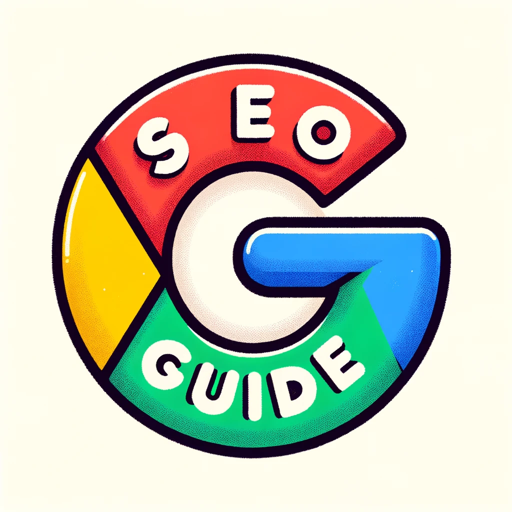Helpful content QA-AI-powered content quality review
AI-powered content quality made easy
Related Tools
Load More
Content Helpfulness and Quality SEO Analyzer
I help you evaluate your web content helpfulness, relevance, and quality for your targeted query based on Google's guidelines vs the one of your competitors.

Quality Raters SEO Guide
Assists with quality raters guidelines. Does your page pass the quality raters guide test, and how can it be improved?

Search Quality Evaluator GPT
Analyse content through the official Google Search Quality Rater Guidelines.

SearchQualityGPT
Evaluates how your content aligns with the EEAT criteria and provides detailed suggestions for enhancement.
GH QC checker
GH QC checker
Quality Assurance Sidekick (QA)
Professional Software Developer in Test, Software Tester, Requirements Engineer and Business Analyst. Detailed advisor in product and project quality. Can help with planning and validating action related to quality topics.
20.0 / 5 (200 votes)
Introduction to Helpful Content QA
Helpful Content QA is designed to ensure that written content meets high standards of quality, relevance, and clarity, based on predefined guidelines. It operates by evaluating key elements such as grammar, sentence structure, topical relevance, depth of information, use of examples, and formatting. The purpose of this system is to streamline content review processes, making it easier for teams or individuals to produce clear, accurate, and engaging content that aligns with both user needs and client goals. For instance, in a scenario where a company is preparing a technical report, Helpful Content QA will review the document to ensure that it maintains proper grammar, uses active voice, and includes client-specific examples, enhancing its professional tone and coherence.

Main Functions of Helpful Content QA
Grammar and Syntax Checking
Example
Detects errors in spelling, grammar, and punctuation, ensuring text consistency in UK or US English.
Scenario
A marketing agency drafting a product brochure uses Helpful Content QA to verify the accuracy of language and make sure it aligns with their UK audience's preferences. This helps them avoid inconsistencies, such as switching between US and UK spellings, which could undermine the document's professionalism.
Topical Relevance and Depth Assessment
Example
Evaluates whether the content is deeply relevant to the primary topic and includes examples directly related to the subject.
Scenario
A tech company developing a white paper on cloud computing uses Helpful Content QA to check whether all sections are aligned with the topic and whether they include relevant case studies, client testimonials, and real-life examples, ensuring the document is informative and credible.
Structure and Formatting Checks
Example
Ensures consistency in heading structures (H1, H2, H3), paragraph length, and numbering, making the document easy to read and navigate.
Scenario
A content creation team working on an internal knowledge base uses Helpful Content QA to ensure all articles follow a clear hierarchy in their headings and that no paragraph exceeds four sentences, improving readability and usability for the staff.
Ideal Users of Helpful Content QA
Content Creators and Writers
Content creators, including freelance writers, bloggers, and marketing professionals, benefit from Helpful Content QA by ensuring their work is polished, consistent, and aligned with best practices. They can improve the clarity of their messaging and ensure that their content adheres to client-specific guidelines.
Marketing and SEO Teams
Marketing teams, particularly those focused on SEO, can use Helpful Content QA to optimize content for relevance and readability. By ensuring the use of real-life examples, proper structuring, and internal linking, the tool helps enhance both the user experience and the content's search engine performance.

How to Use Helpful Content QA
Step 1
Visit aichatonline.org for a free trial without login. No need for ChatGPT Plus.
Step 2
Ensure you have a specific document, text, or content for review, as Helpful Content QA focuses on in-depth analysis and feedback on content quality.
Step 3
Upload or paste the content into the platform, then select the assessment criteria you want, such as grammar, structure, relevancy, or examples.
Step 4
Receive detailed feedback based on a scoring system that evaluates grammar, examples, coherence, and more, with improvement suggestions.
Step 5
Use the insights and recommendations provided by the tool to refine and optimize your content for better quality and relevance.
Try other advanced and practical GPTs
Master Prompt
AI-powered prompt optimization

のYouTube SEO Wizard
Boost Your YouTube Views with AI-Powered SEO

のYouTube Viral Hook Master
AI-powered YouTube Hook Generator

LimkedIn Companion
Craft AI-driven LinkedIn content effortlessly.

PerfectGPT
AI-powered clarity and precision.

Balanced Top Stories
AI-powered news comparison across biases.

Actions Guide
Streamline your tasks with AI-powered automation.

시장규모분석 : 데이터링커
AI-Powered Market Insights, Simplified.

تحسين الصياغة العربية
AI-powered Arabic text enhancement

Landing Page Crafter
AI-driven landing pages made simple.

小红书
AI-powered XiaoHongShu content creator.

Research Writer
AI-powered academic writing support.

- Academic Writing
- Marketing Copy
- Grammar Check
- Content Optimization
- SEO Review
Helpful Content QA: Frequently Asked Questions
What is Helpful Content QA designed for?
Helpful Content QA is designed to evaluate the quality of written content by analyzing elements such as grammar, structure, coherence, and relevance. It helps users improve their content based on specific quality metrics.
How does the scoring system work?
The tool uses a points-based system to assess content across various criteria, like grammar, sentence structure, and relevancy. Scores range from 'Bad' to 'Great,' offering a clear understanding of which areas need improvement.
Can it be used for academic and professional writing?
Yes, Helpful Content QA can be applied to both academic and professional writing. It is useful for improving research papers, reports, articles, and more by providing constructive feedback tailored to specific use cases.
Does it support SEO-focused content review?
Absolutely. Helpful Content QA helps with SEO by analyzing topical relevance, internal linking, and keyword optimization to ensure content aligns with SEO best practices while maintaining quality.
What types of feedback can I expect?
You’ll receive feedback on grammar, sentence flow, consistency, use of relevant examples, and structural cohesiveness. The tool also identifies areas where the content may lack depth or need better organization.